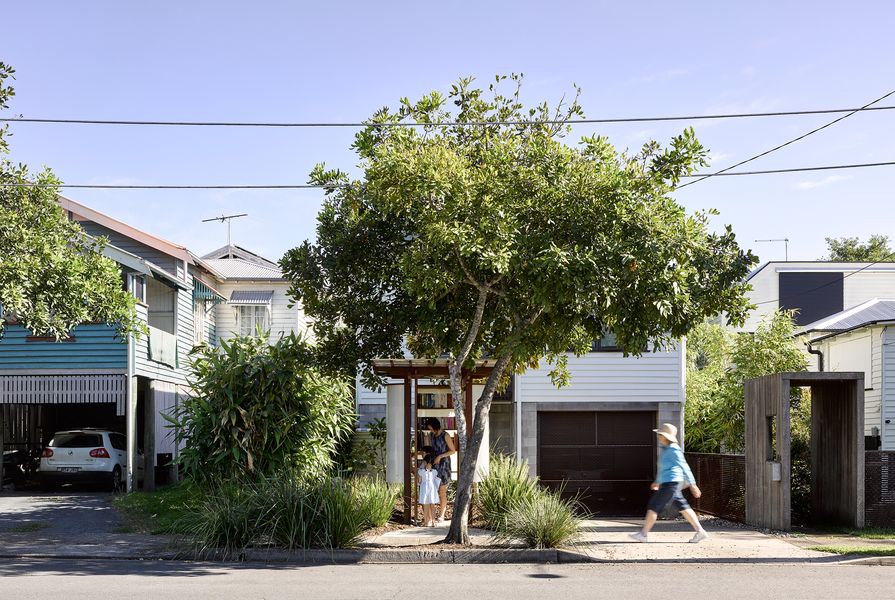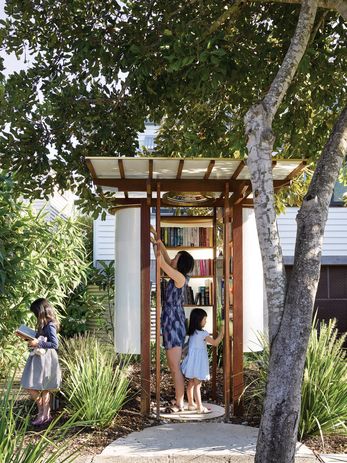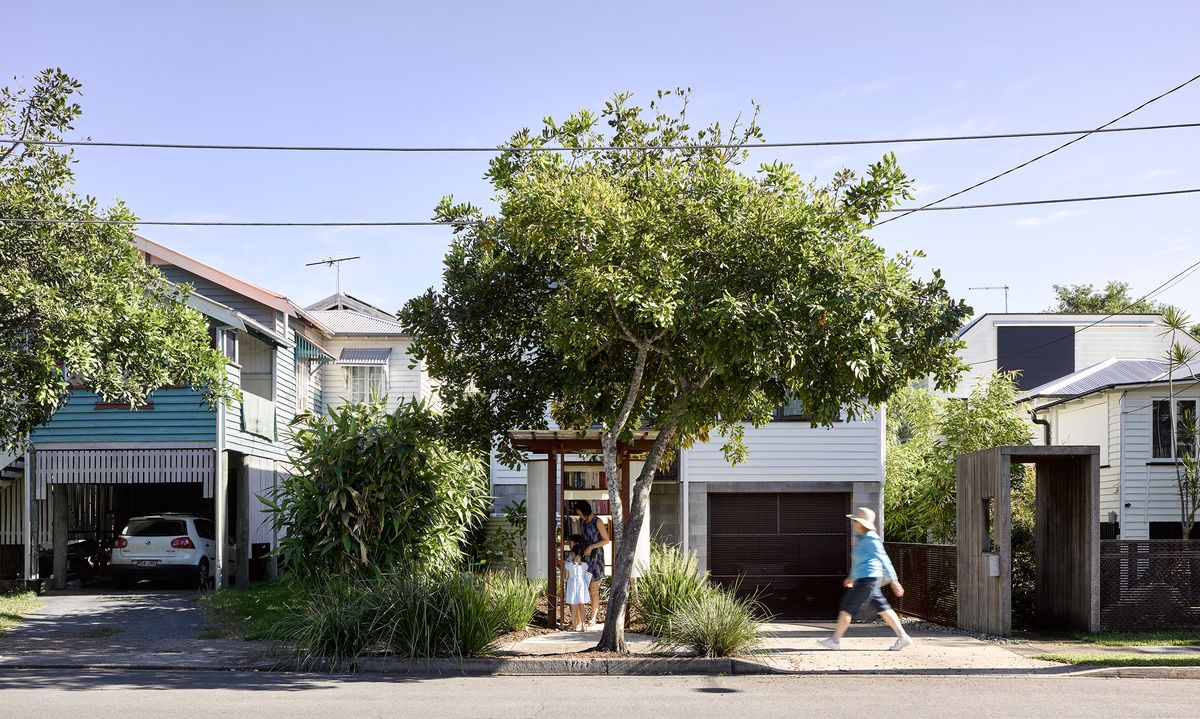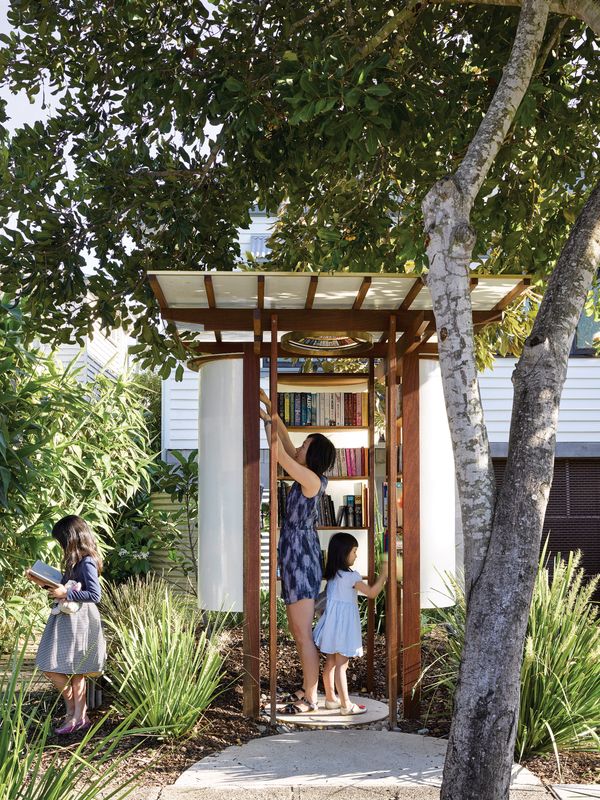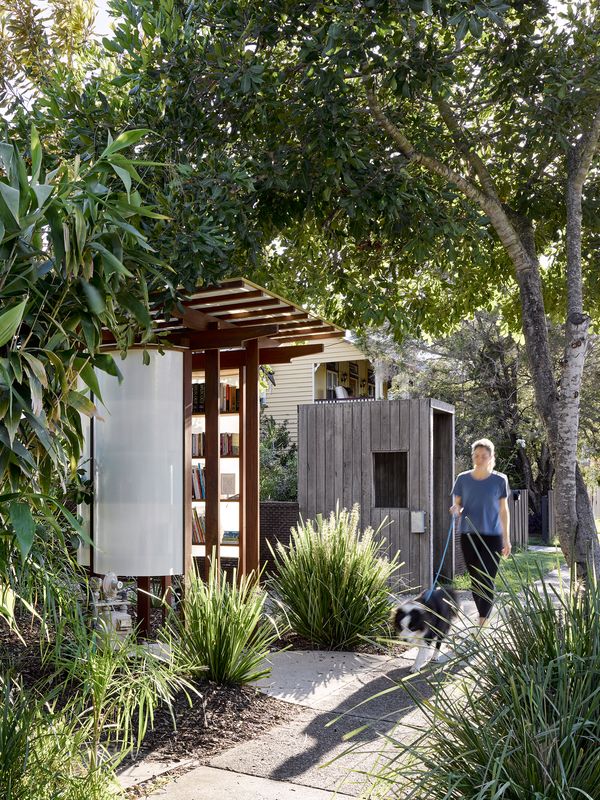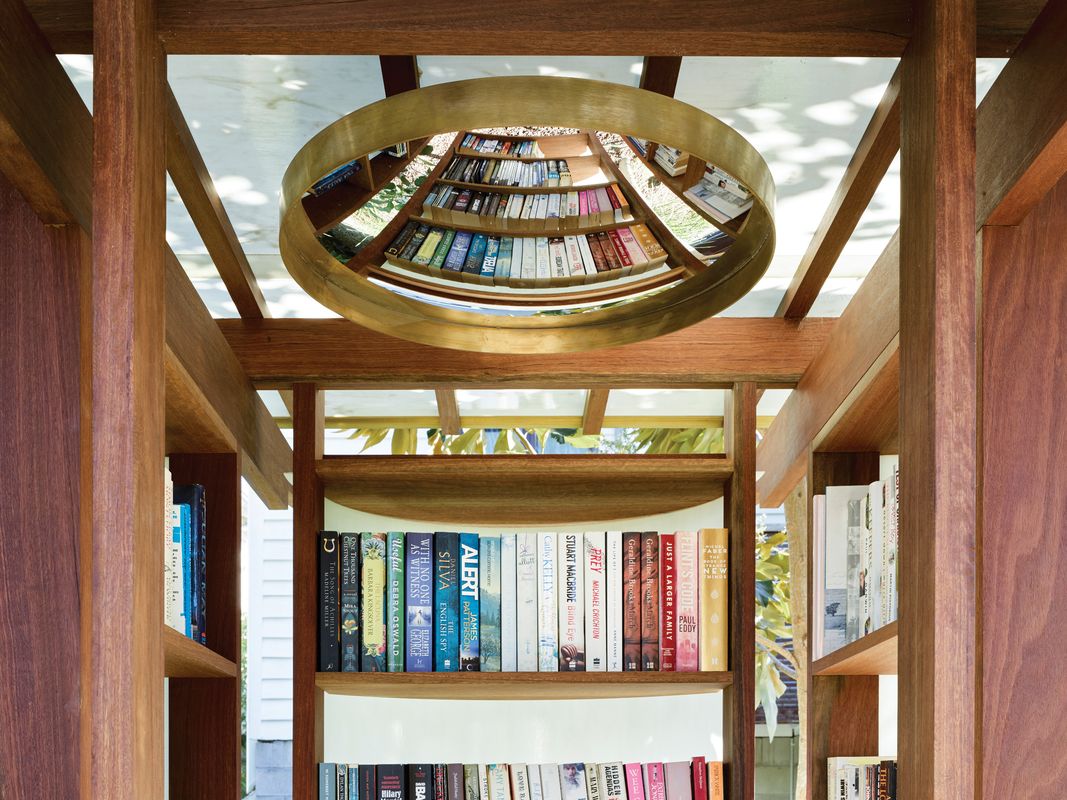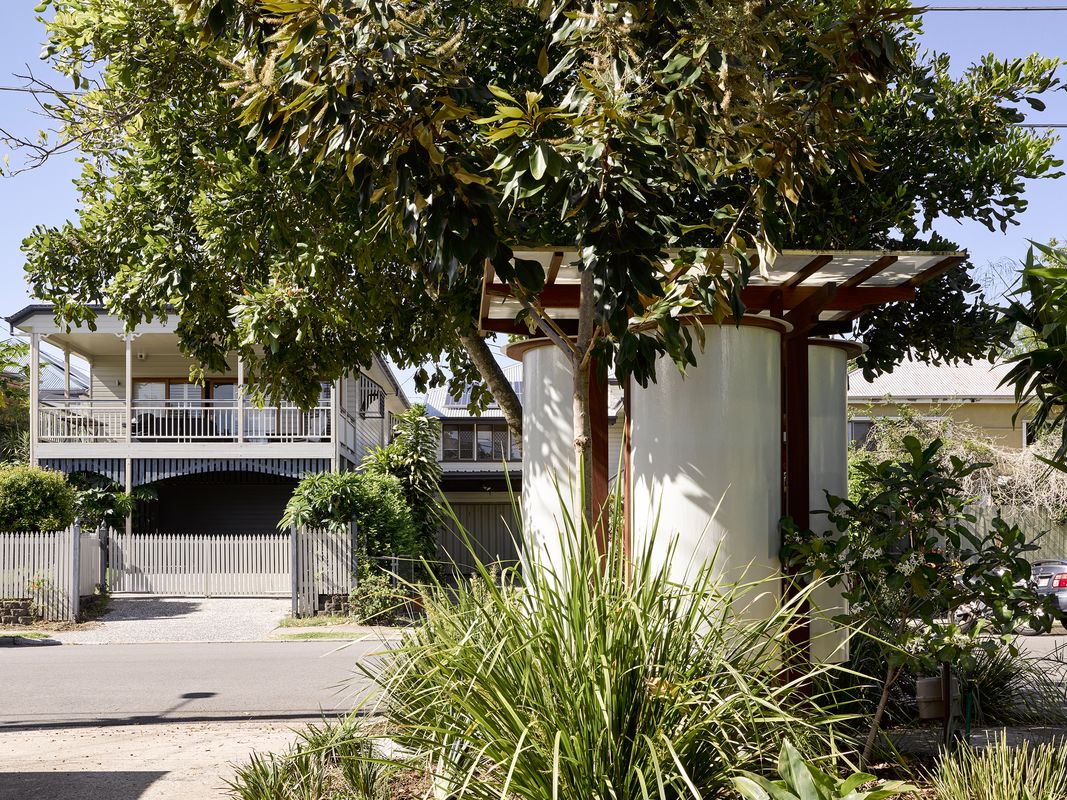Beside a well-worn West End footpath in Brisbane, a community book depository has settled in the dappled shade of a tulipwood tree. Designed by Brisbane architect Jonathan Goh and constructed by carpenter Evan Goldsmith, the Ryan Street Footpath Library represents an architect’s take on the self-appointed challenge to design a front yard book exchange. The timber-framed, fibreglass-clad footpath folly houses an assortment of books and games for children and adults as a means to encourage small-scale knowledge-sharing in this tight-knit Brisbane neighbourhood.
The library features a series of square and circular motifs in tension with one another.
Image: Christopher Frederick Jones
Intrigued by the spatial opportunities of the cube and drum observed in buildings such as the Stockholm Public Library designed by Swedish architect Gunnar Asplund, Jonathan set out to explore the possibilities of employing pure, opposing forms through a series of square and circle motifs set within an orthogonal structural grid. The square object, asserted by the roof canopy, is reinforced by the central void carved out by the square edges of bookshelves. Circular elements emerge in tension with these, namely the curved outer edges of the same shelves and the semicircular sweep of translucent walls beyond. Suspended from the ceiling, a convex mirror reflects the circular shape of the concrete floor below, simultaneously offering a lens through which the whole interior appears reflected in distorted curvature.
More than an exercise in form and pattern-making, the structure offers lessons in materiality and craftsmanship as it weaves together timber, fibreglass and brass with restraint, beauty and skill. Solid ironbark timbers establish the rational, structural frame braced by the integrated bookshelves semi-enclosing three sides. Translucent fibreglass sheets, held between vertical timbers, create the soft, billowing skin, reminiscent of the curved pages of a book caught in a breeze. The sailing roof, also fibreglass and translucent, registers light and shade, capturing the organic forms of leaf and branch cast in shadow from above. Brass edging neatly finishes the composition, bestowing a civic quality upon this small yet assertive piece of public architecture.
As a study in design, the Ryan Street Footpath Library delves deeply, referencing historical archetypes as much as it does local contemporary architecture. More than a sophisticated piece of street furniture, it is an object finely tuned to its setting, the ergonomics of the human body and the scale of the book. It is difficult to imagine a more interesting exercise in miniature architecture or a more genuine contribution to the life of a suburban street.
Source
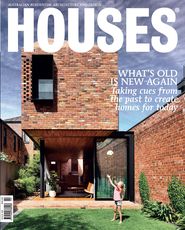
Project
Published online: 27 Nov 2018
Words:
Michelle Bailey
Images:
Christopher Frederick Jones
Issue
Houses, April 2018

